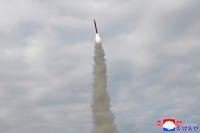The cost of the F-35 Joint Strike Fighter will increase by about $1 million per plane if Canada follows through with plans withdraw from the multi-nation effort to develop and field a new stealth fighter, the program executive officer told lawmakers on Wednesday.
The move is also likely to spur F-35 partner countries to open talks about who gets Canada's share of manufacturing parts for the plane and related equipment, Air Force Lt. Gen. Christopher Bogdan told a subcommittee of the House Armed Services Committee.
Canadian Prime Minister designate and Liberal Party leader Justin Trudeau has pledged to pull Canada out of the U.S.-led air operations over Syria and Iraq, and also drop out of the F-35 program once the new government is formed. He said last month that he would call for a new competition to replace Canada's aging fighter fleet.
"There are many other fighters at much lower price points that we can use that have been proven, that we will actually be able to deliver in a timely way," he said, the Sydney Morning Herald newspaper in Australia reported.
Without Canada production of the F-35 would drop by about 61 planes, Bogdan said. He predicted that would mean increased unit production costs of anywhere from 0.7 percent to 1 percent, "or about $1 million per plane."
The Pentagon plans to buy 2,457 F-35 for the Air Force, Marine Corps and Navy at a total cost of $391 billion, making it the Defense Department's most expensive weapons acquisition program.
Bogdan said the Marine Corps version of the aircraft, a jump-jet known as the F-35B, is on track to begin operational flights this year, followed by the Air Force in 2016 and the Navy in 2019. The Corps earlier this year declared the variant had achieved the acquisition milestone, called initial operational capability.
The F-35, which began development in 2001, is planned as the fifth-generation fighter for a nearly a dozen countries even with Canada's planned departure. Partner countries include Australia, Denmark, Israel, Italy, Japan, Netherlands, Norway, Turkey, Great Britain and South Korea.
Bogdan said Canada's exit from the program raises questions about how the industrial base will be impacted.
"We don't have a set of rules as to what happens to that industrial participation if a partner leaves," he said, "but it is my opinion that the remaining partners and industry partners are going to have discussions about what to do with all the industries in Canada building pieces and parts for the airplane."
--Bryant Jordan can be reached at bryant.jordan@military.com. Follow him on Twitter at @bryantjordan.









